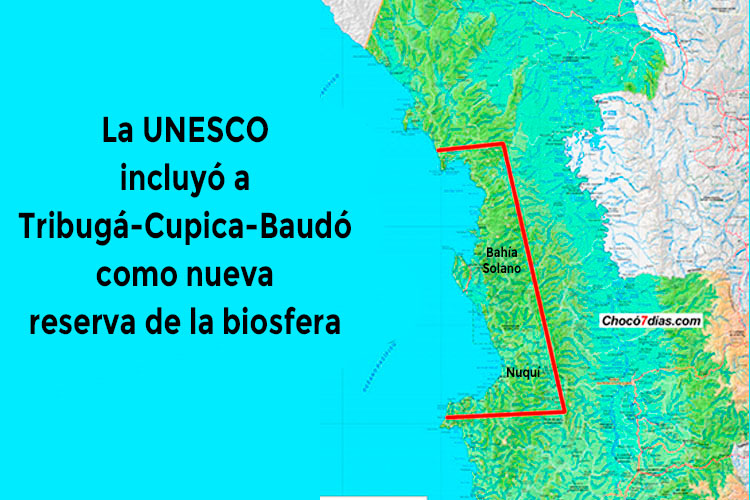The International Coordination Council of the Man and the Biosphere Program of the United Nations Educational, Scientific and Cultural Organization, UNESCO, included the Tribugá-Cupica-Baudó protected area as a new biosphere reserve.
The decision was made during a meeting held from June 12 to 15 at its headquarters in Paris.
The Program designated a total of ten new biosphere reserves in nine countries and one new transboundary reserve. With these new names, the World Network currently has 748 reserves in 134 countries, including 23 cross-border reserves.
Tribugá-Cupica-Baudó Reserve
Located in Chocó, Tribugá-Cupica-Baudó is the first biosphere reserve located on the Colombian Pacific coast, one of the two great biomes, large ecological communities with characteristic vegetation and fauna that influence this area.
The other is the tropical humid forest of the Serranía del Baudó. The biosphere reserve contains a great variety of landscapes (cliffs, estuaries, coasts, gulfs, inlets, bays, and marine areas) and ecosystems (reefs, mangroves, tropical forests) rich in biodiversity.
It has a population of more than 18,000 inhabitants. Its main economic activities are subsistence agriculture, artisanal fishing, traditional fishing and the use of resources, commerce, nature tourism and crafts.
Main objective: preserve ecosystems
Biosphere reserves are one of the pillars of UNESCO’s mandate as a United Nations agency for science. Each of them promotes innovative local solutions, in order to conserve biodiversity, preserve ecosystems and address climate change, while improving people’s livelihoods, for example through the development of agroecology, renewable energy sources and green industries.
They also contribute to achieving the objectives set last December within the framework of the Convention on the Kunming-Montreal Global Framework for Biological Diversity.
These objectives contemplate the designation of 30% of the earth’s surface as protected areas and the restoration of 30% of the most degraded ecosystems on the planet by 2030.
They may have ports and highways
UNESCO biosphere reserve areas may have ports and roads. Biosphere reserve areas are designated by UNESCO to protect and conserve important areas from an ecological, social and economic point of view. These areas may include natural ecosystems as well as areas where sustainable human activities take place.
Biosphere reserve areas are intended to be models of conservation and sustainable development, which implies that controlled and sustainable human activities are allowed in these areas, such as agriculture, fishing, tourism and infrastructure, including ports and roads. .
However, it is important to highlight that the planning and construction of roads in biosphere reserve areas is generally carried out under strict controls and regulations to minimize negative impacts on ecosystems and biodiversity. Solutions are sought that minimize habitat fragmentation, the impact on vulnerable species and environmental degradation in general.
In short, biosphere reserve areas may have ports and roads, but these are planned and managed in a way that minimizes their impact on the environment and promotes sustainable development.
